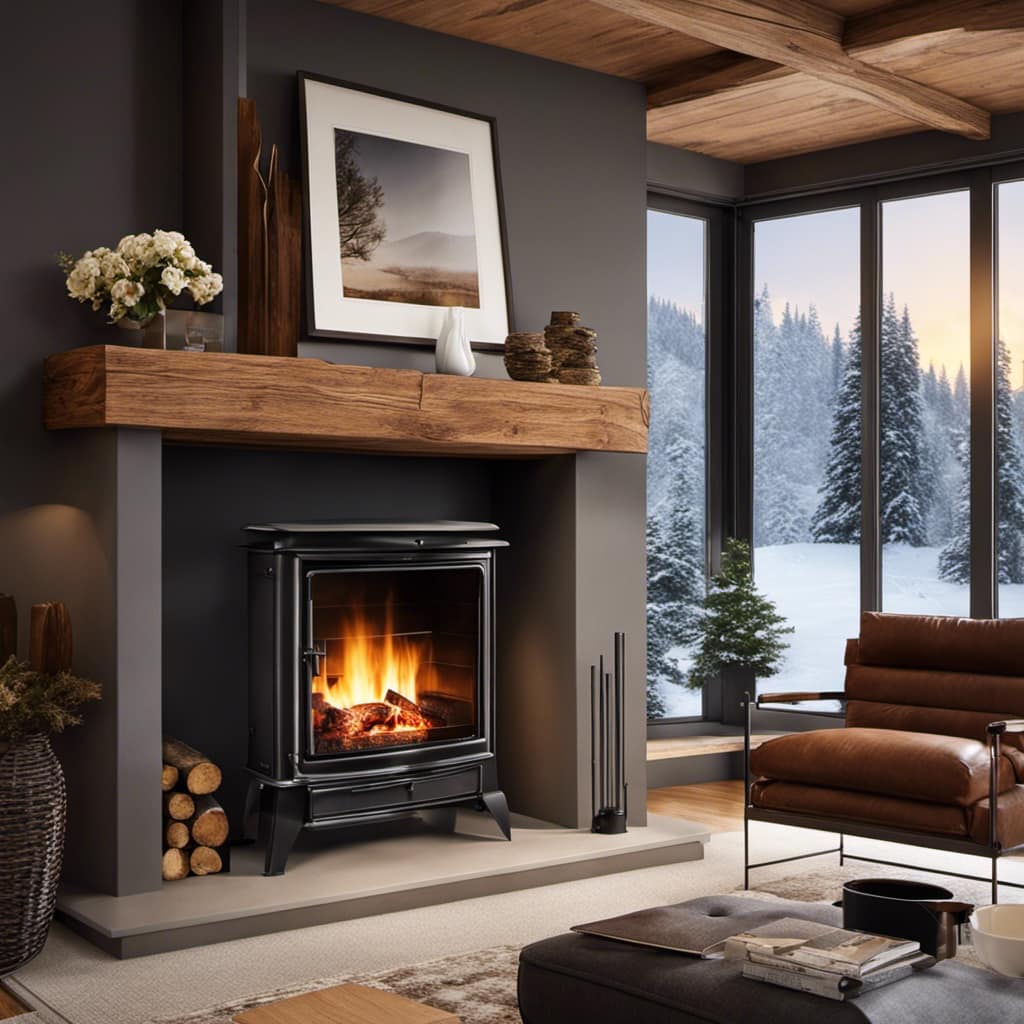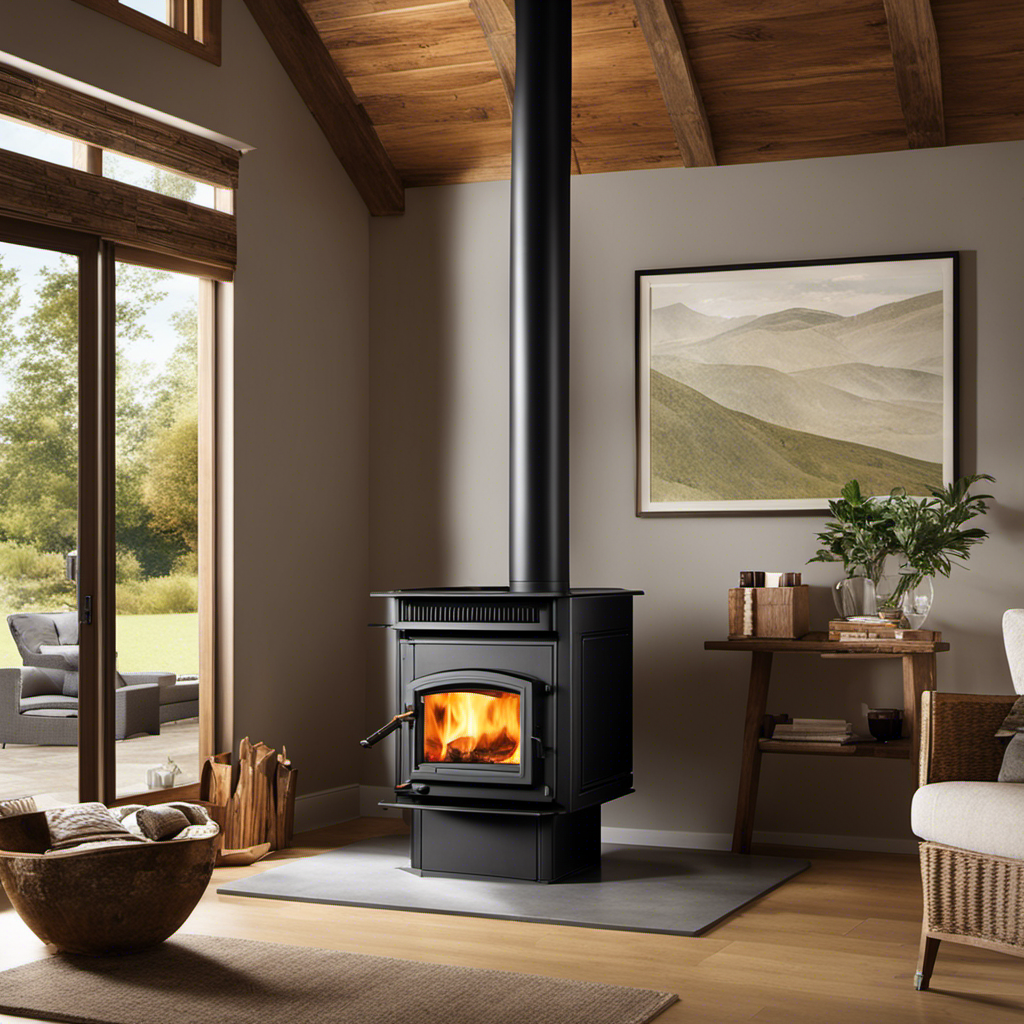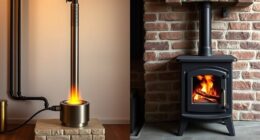As a person who cherishes the cozy warmth of a fire yet is dedicated to eco-friendly solutions, the impressive efficiency of catalytic wood stoves has always intrigued me.
But what exactly is a catalytic wood stove?
In this article, we’ll explore the ins and outs of this innovative heating device, from its working mechanism to its environmental benefits.
Join me as we delve into the fascinating world of catalytic wood stoves and discover why they’re becoming a popular choice for heating homes with a touch of sustainability.
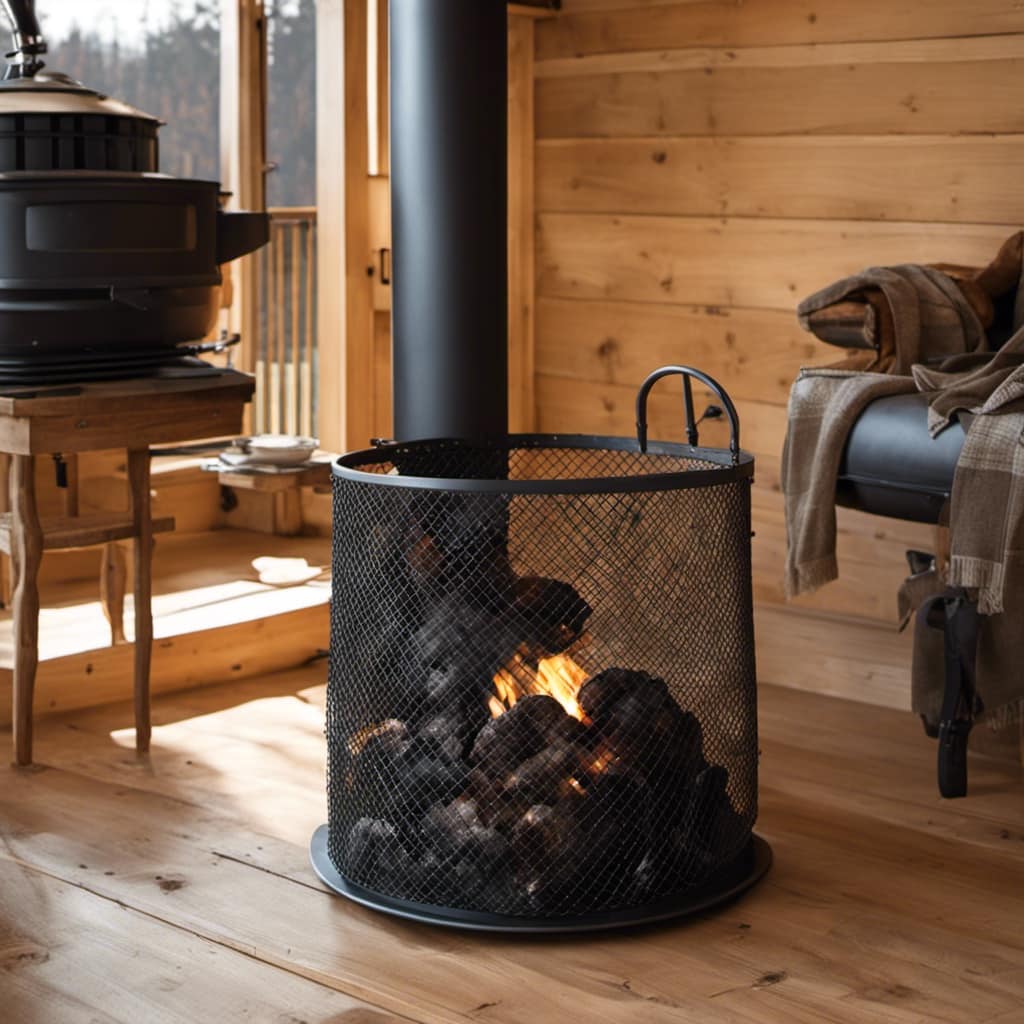
Key Takeaways
- Catalytic wood stoves utilize a catalytic combustor coated with precious metals, increasing efficiency and promoting complete combustion.
- Regular maintenance and replacement of the catalytic combustor are necessary for optimal performance.
- Catalytic wood stoves require less wood to produce the same amount of heat, leading to cost and resource savings.
- Catalytic wood stoves reduce emissions, improve air quality, and provide health and environmental benefits.
How Does a Catalytic Wood Stove Work
I’m amazed at how a catalytic wood stove works to efficiently burn the wood and produce heat. The mechanism behind a catalytic wood stove involves the use of a catalytic combustor, which is a honeycomb-like structure coated with a precious metal, typically platinum or palladium. When the wood is burned in the stove, the smoke and gases produced pass through this catalytic combustor. The precious metal coating acts as a catalyst, facilitating the combustion of the smoke and gases at lower temperatures.
This catalytic process helps increase the efficiency of the wood stove by ensuring that more of the fuel is burned and converted into useful heat. It also helps reduce emissions by promoting the complete combustion of gases and particulate matter. However, there are some drawbacks to using a catalytic wood stove. The catalytic combustor needs regular maintenance and replacement, as the precious metal coating can degrade over time. Additionally, catalytic wood stoves can be more expensive to purchase and install compared to non-catalytic models.
Despite these drawbacks, the benefits of using a catalytic wood stove are significant. The increased efficiency means that less wood is needed to produce the same amount of heat, saving both money and resources. The reduced emissions also contribute to improved air quality, making catalytic wood stoves a more environmentally friendly option.
The Advantages of Using a Catalytic Wood Stove
Using a catalytic wood stove provides me with a more efficient and environmentally friendly way to heat my home. The advantages and benefits of using a catalytic wood stove are numerous.

Firstly, these stoves are highly efficient in burning wood, which means that they can produce more heat with less fuel. This is due to the catalytic combustor, which helps to increase the temperature at which the wood burns, resulting in a more complete combustion process. As a result, I can save money on fuel costs and reduce my carbon footprint.
Another advantage of using a catalytic wood stove is that it helps to reduce air pollution. The catalytic combustor helps to trap and burn off harmful pollutants, such as carbon monoxide and volatile organic compounds, which are released during the combustion process. This means that the emissions from the stove are cleaner and less harmful to the environment.
Additionally, catalytic wood stoves provide a longer and more consistent heat output. The catalytic combustor helps to maintain a steady temperature, which means that the stove can burn for longer periods without the need for constant refueling. This is especially beneficial during the colder months when I rely on my wood stove for a comfortable and warm living space.
Understanding the Catalytic Combustion Process
The catalytic combustion process increases the temperature at which the fuel burns, resulting in a more complete and efficient combustion. This process is a key feature of catalytic stoves, which are becoming increasingly popular for their environmental benefits and energy efficiency. Understanding how the catalytic combustion process works can help us appreciate the advantages of using catalytic stoves.
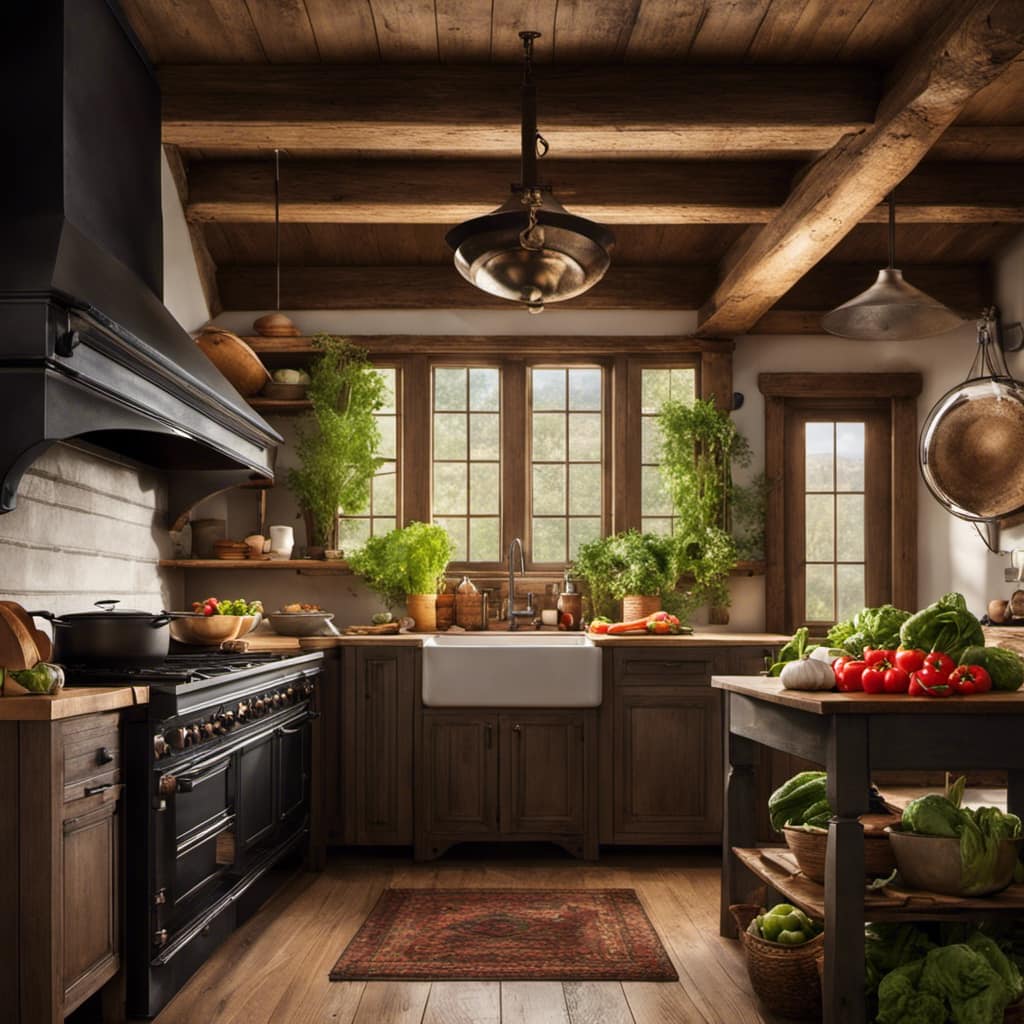
Catalytic stoves are equipped with a catalytic converter, typically made of ceramic material coated with a platinum or palladium catalyst. When the stove is operating, the smoke and gases produced during combustion pass through the catalytic converter. As they come into contact with the catalyst, a chemical reaction occurs, converting harmful pollutants into less harmful substances, such as carbon dioxide and water vapor.
The catalytic combustion process has several benefits. First and foremost, it significantly reduces emissions, making catalytic stoves a cleaner and greener option for heating homes. They release lower levels of carbon monoxide, particulate matter, and other harmful pollutants compared to traditional wood stoves.
Additionally, catalytic stoves are more energy-efficient. By increasing the temperature at which the fuel burns, they ensure a more complete combustion, resulting in higher heat output and less wasted energy.
To maintain the efficiency of a catalytic stove, regular maintenance is essential. This includes cleaning the catalyst regularly to remove any build-up of creosote and ash, as well as replacing it as needed. Proper maintenance not only ensures optimal performance but also extends the lifespan of the catalytic converter.

Key Components of a Catalytic Wood Stove
As an expert in wood stoves, I can confidently say that the key components of a catalytic wood stove are what make it an efficient and environmentally-friendly heating option.
These components typically include a catalytic combustor, a bypass damper, and a secondary combustion chamber.
The catalytic combustor, made of a honeycomb-like material coated with a catalyst, helps to ignite and burn the smoke and gases produced by the wood, increasing the stove’s efficiency and reducing emissions.
The bypass damper allows for control of the airflow, while the secondary combustion chamber helps to further burn any remaining particles and gases before they’re released into the environment.

Efficiency of Catalytic Stoves
I can’t deny that catalytic wood stoves have become more efficient in recent years. With advancements in technology and a better understanding of how these stoves work, manufacturers have made significant improvements in their design. One of the key factors in improving stove efficiency is proper catalytic stove maintenance. Regular cleaning and maintenance of the catalytic combustor, such as removing ash and creosote buildup, can greatly enhance the stove’s performance. Additionally, ensuring a proper air supply and using dry, seasoned wood can also contribute to better efficiency. To better understand the impact of these maintenance practices, take a look at the table below, which highlights the potential efficiency gains achieved through various measures:
| Maintenance Practice | Efficiency Gain |
|---|---|
| Regular cleaning | 10-15% |
| Proper air supply | 5-10% |
| Using dry, seasoned wood | 15-20% |
Emissions Reduction in Stoves
Now, let’s dive into the topic of emissions reduction in stoves. As someone who’s been passionate about environmental sustainability for years, I’m thrilled to share my knowledge on this crucial subject.
Here are three key points to consider when it comes to emissions control and the health benefits associated with it:
Improved Air Quality: Traditional stoves release harmful pollutants like carbon monoxide and particulate matter into the air, leading to respiratory issues and other health problems. By using stoves with advanced emissions control technology, we can significantly reduce these harmful emissions and improve the overall air quality in our homes and communities.
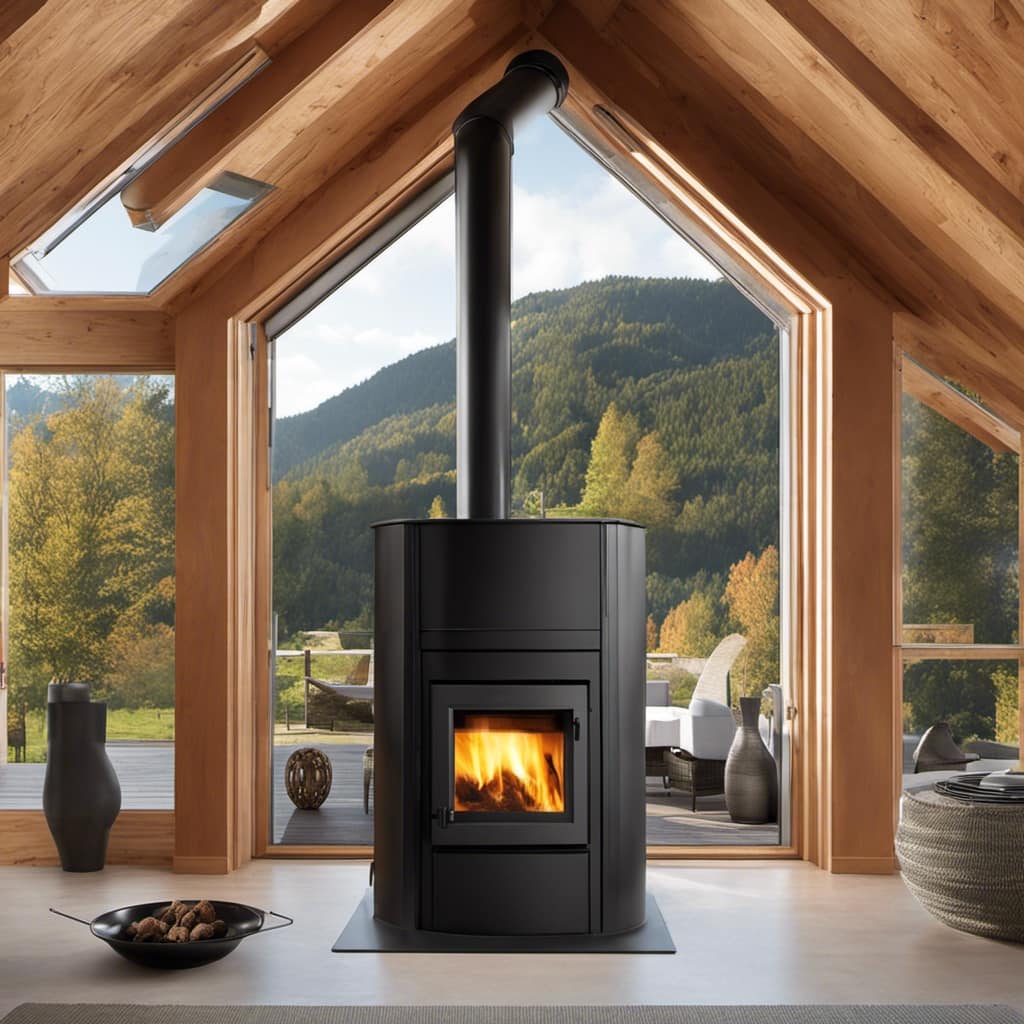
Health Benefits: Lowering emissions not only helps the environment but also has a direct impact on our health. By using stoves that produce fewer pollutants, we can decrease the risk of respiratory infections, asthma attacks, and other respiratory diseases. This is especially important for vulnerable populations such as children and the elderly.
Climate Change Mitigation: Emissions reduction in stoves also plays a vital role in mitigating climate change. By minimizing the release of greenhouse gases like carbon dioxide, we can contribute to the global efforts to reduce our carbon footprint and combat the adverse effects of climate change.
Tips for Properly Operating a Catalytic Wood Stove
To properly operate a catalytic wood stove, it’s important to maintain an optimal burn temperature and ensure clean combustion. This can be achieved by using dry, seasoned wood and avoiding the temptation to overload the stove with fuel.
Remember to regularly clean the stove’s catalyst, as this will help maximize its efficiency and extend its lifespan.
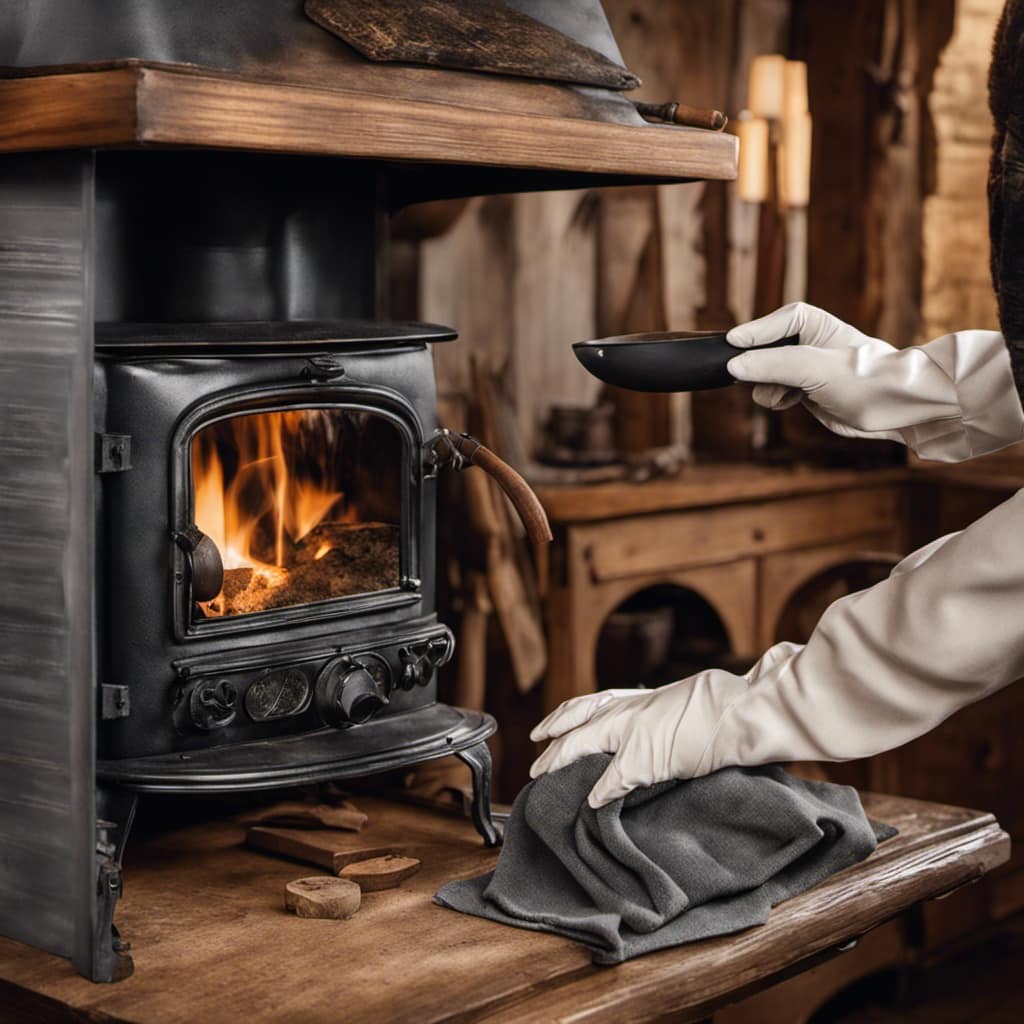
Optimal Burn Temperature
Maintaining the optimal burn temperature is key to maximizing the efficiency of a catalytic wood stove. Achieving this temperature ensures that the wood burns completely, minimizing waste and reducing harmful emissions.
There are several factors to consider when trying to reach and maintain the optimal burn temperature:
Wood quality: Using dry, seasoned wood with low moisture content is crucial. Wet or green wood requires more energy to burn, resulting in a lower burn temperature.
Airflow control: Properly adjusting the stove’s air vents is essential for maintaining the optimal burn temperature. Too little air can cause incomplete combustion, while too much air can lead to excessive heat loss.
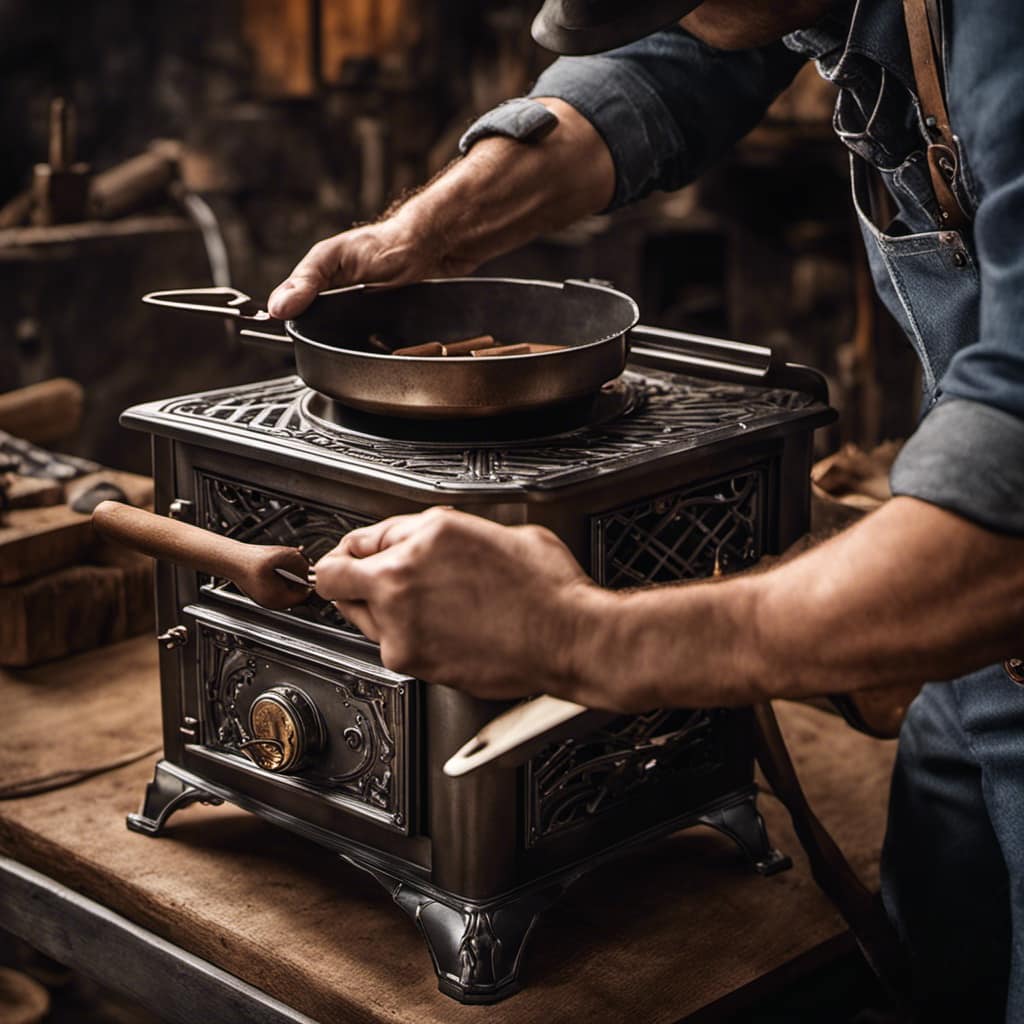
Catalytic converter maintenance: Regularly cleaning and inspecting the catalytic converter is important for optimal performance. A dirty or damaged converter can hinder airflow and prevent the stove from reaching the desired burn temperature.
Maintaining Clean Combustion
I can maximize the efficiency of my stove by ensuring clean combustion.
Clean combustion is essential for achieving high combustion efficiency, which means burning wood more thoroughly and producing more heat with less waste.
To maintain clean combustion, I need to pay attention to a few key factors.
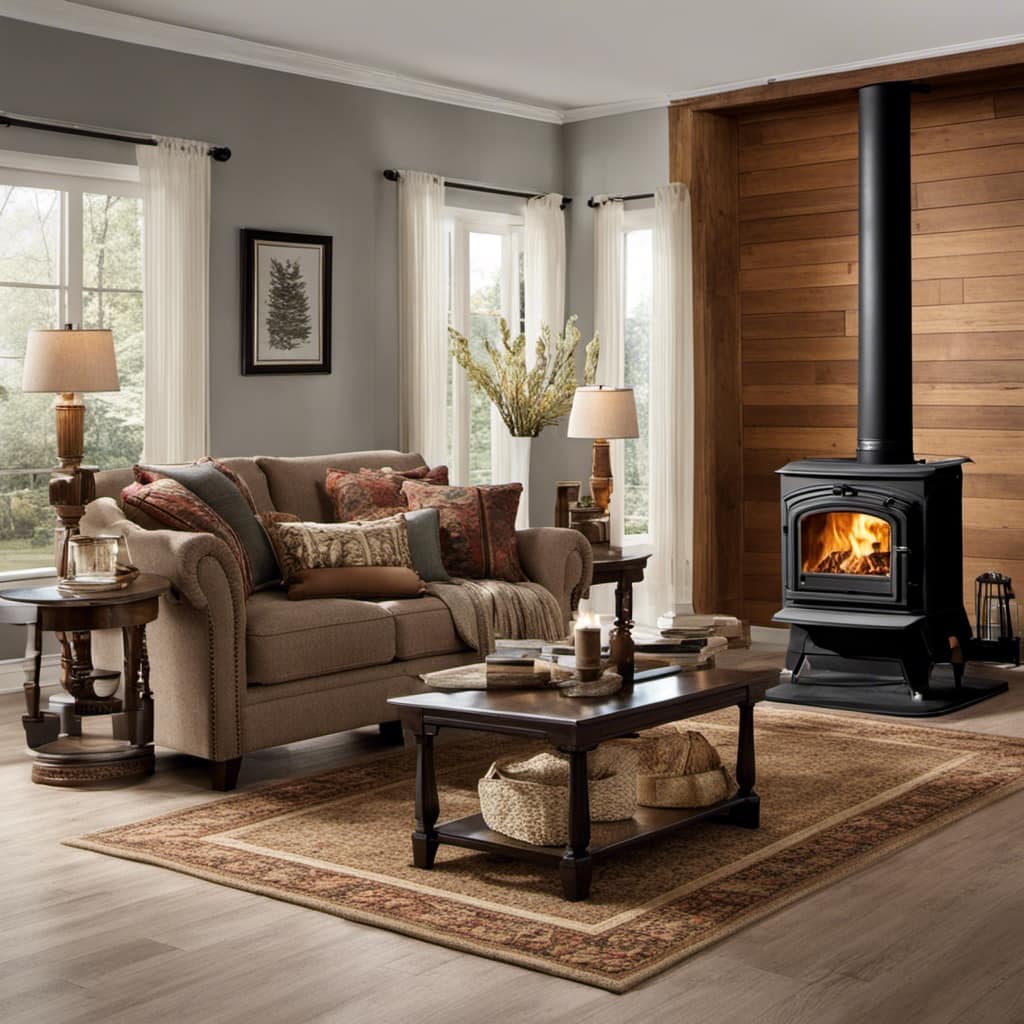
First, I should use properly seasoned firewood with low moisture content to avoid excessive smoke and soot.
Second, I should avoid overloading the stove with too much wood, as this can lead to incomplete combustion.
Third, I must regularly clean the stove’s components, such as the catalytic converter or the baffle, to remove any buildup of creosote or other debris that can hinder clean combustion.
Comparing Catalytic and Non-Catalytic Wood Stoves
In my experience, catalytic wood stoves offer better efficiency and longer burn times compared to non-catalytic wood stoves. Here are three key reasons why:

Improved fuel efficiency: Catalytic wood stoves are designed with a catalyst, typically made of precious metals like platinum or palladium, that helps to burn off harmful pollutants and increase combustion efficiency. This means that more heat is produced from every piece of wood, resulting in less wasted energy and a higher level of fuel efficiency.
Longer burn times: The catalytic process in these stoves allows for a slower and more controlled burn, which means that the fire can be maintained for longer periods of time without constantly adding more wood. This is particularly beneficial for overnight burning or when you need to leave the house for an extended period. With a non-catalytic stove, you may need to refuel more frequently to maintain the desired heat output.
Reduced environmental impact: As the catalyst in a catalytic wood stove helps to burn off pollutants, these stoves emit fewer harmful emissions into the environment compared to non-catalytic ones. This can have a positive impact on air quality, especially in areas where wood burning is common. By choosing a catalytic wood stove, you can help minimize your carbon footprint and contribute to a healthier environment.
Catalytic Wood Stoves and Environmental Impact
The reduced emissions of harmful pollutants from these stoves contribute to a healthier environment. Catalytic wood stoves are designed to burn wood more efficiently, which results in less smoke and air pollution compared to traditional wood-burning stoves. These stoves utilize a catalytic combustor, typically made of ceramic, that helps to lower the temperature at which the wood burns. As a result, more of the wood is converted into heat, reducing the amount of smoke and harmful pollutants released into the air.
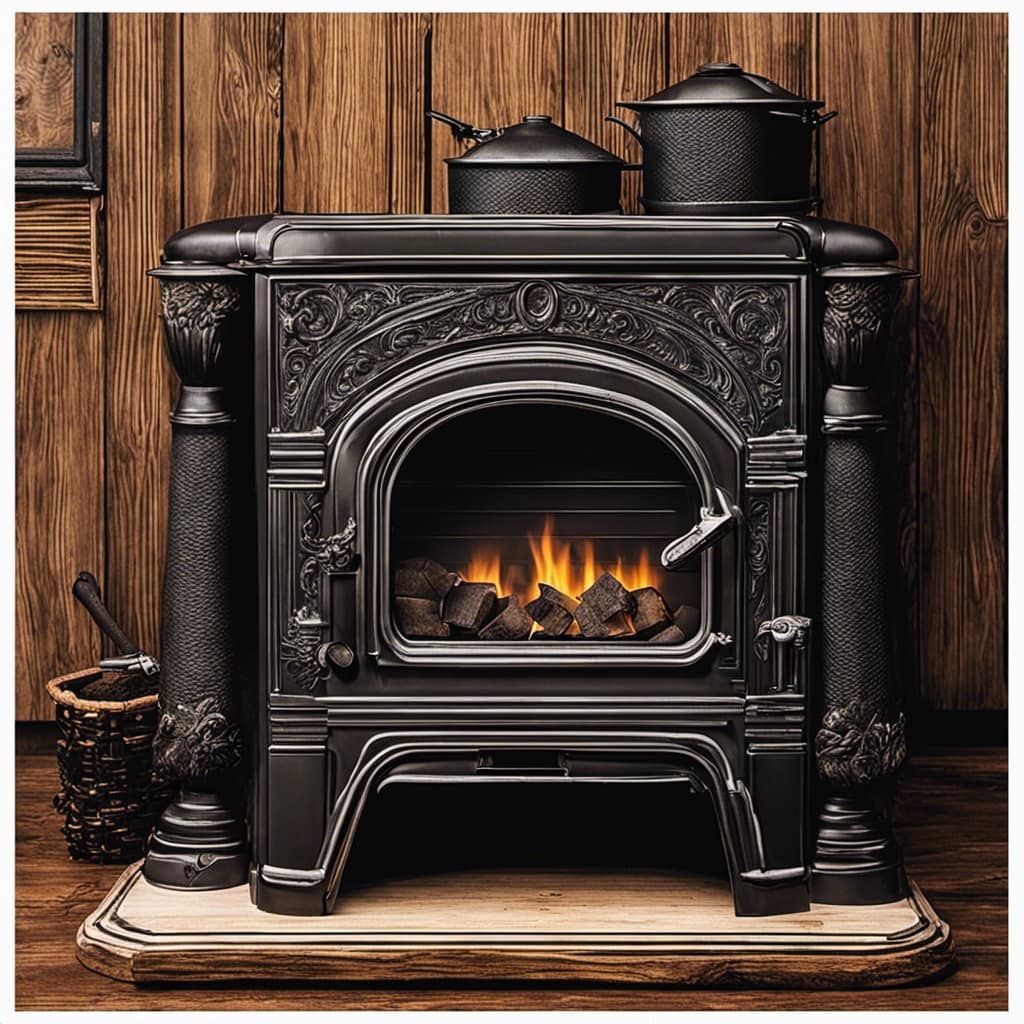
Indoor air quality is a significant concern when it comes to wood-burning stoves. Traditional wood stoves can release high levels of particulate matter, carbon monoxide, and volatile organic compounds (VOCs) into the indoor environment. These pollutants can have adverse health effects, especially for individuals with respiratory conditions such as asthma or chronic obstructive pulmonary disease (COPD).
Catalytic wood stoves are a cost-effective solution for improving indoor air quality. While they may have a higher upfront cost compared to traditional wood stoves, their increased efficiency can lead to significant fuel savings over time. Additionally, the reduced emissions from catalytic wood stoves can help to minimize the environmental impact of wood burning and contribute to a healthier living environment for both residents and the surrounding community.
Factors to Consider When Choosing a Catalytic Wood Stove
When choosing a stove, efficiency, cost, and emissions are important factors to consider. Here are three tips for choosing a catalytic wood stove:
Efficiency: Look for a stove that has a high efficiency rating. This means that it can convert a larger percentage of the fuel’s energy into heat, resulting in less wasted energy and lower heating costs. Look for stoves with an efficiency rating of 75% or higher.
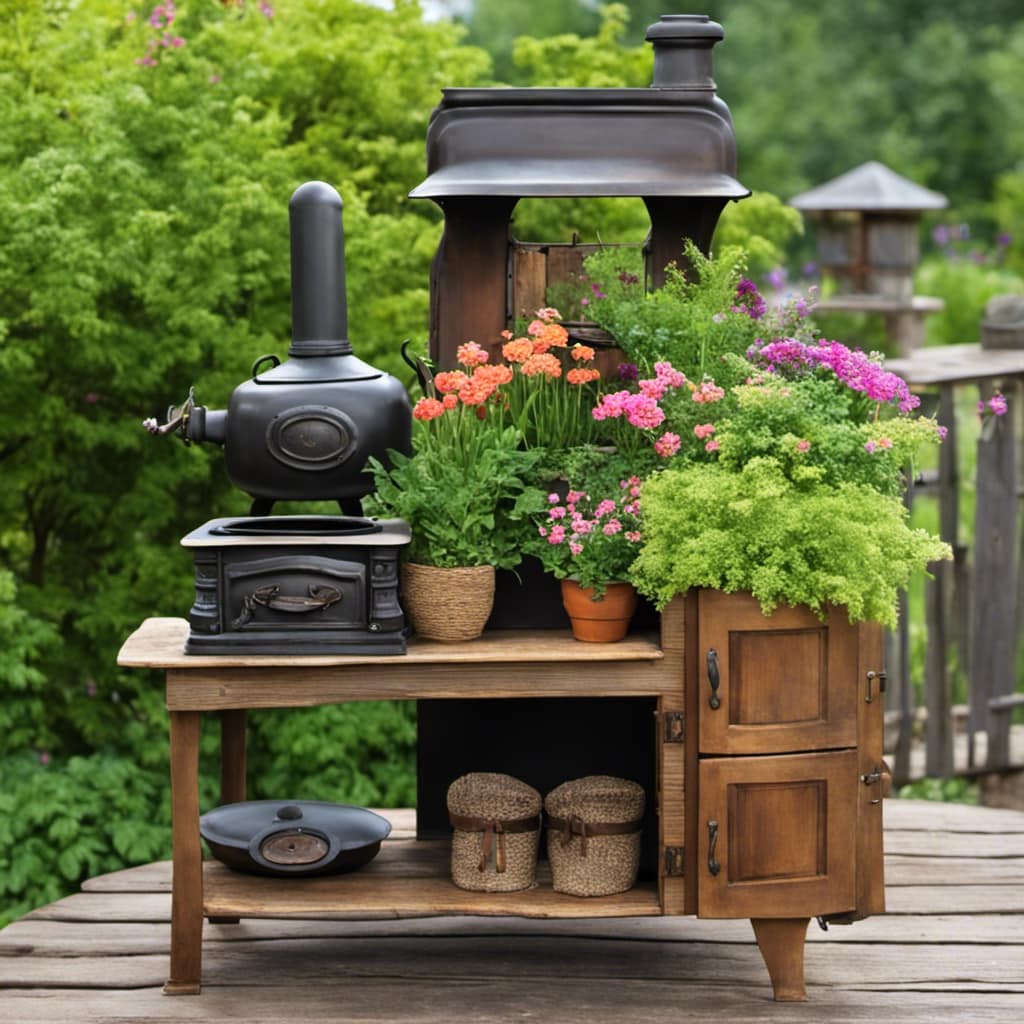
Cost: Consider both the upfront cost of the stove and the long-term cost of fuel. While a higher quality stove may have a higher initial cost, it can save you money in the long run by burning less wood and producing more heat. Additionally, consider the cost of the type of wood you’ll be using and its availability in your area.
Emissions: Pay attention to the emissions rating of the stove. Lower emissions mean less pollution and a smaller environmental impact. Look for stoves that meet or exceed the Environmental Protection Agency’s (EPA) emission standards. These stoves are designed to burn wood more efficiently, resulting in fewer emissions.
Common Misconceptions About Catalytic Wood Stoves
Now that we have discussed the factors to consider when choosing a catalytic wood stove, let’s address some common misconceptions about these devices. It is important to debunk these misconceptions to ensure that potential buyers have accurate information before making a decision.
| Misconception | Fact |
|---|---|
| Catalytic wood stoves are expensive | While catalytic wood stoves may have a higher upfront cost compared to non-catalytic models, they can actually save you money in the long run by burning wood more efficiently and reducing fuel consumption. |
| Catalytic wood stoves require constant maintenance | While it is true that catalytic wood stoves require periodic maintenance, such as cleaning the catalyst and replacing gaskets, the frequency of these tasks is often exaggerated. With proper care and regular inspections, the maintenance required is manageable. |
| Catalytic wood stoves are difficult to use | While catalytic wood stoves may have a steeper learning curve compared to non-catalytic models, they are not inherently difficult to use. Once you understand how to operate the stove and maintain the catalyst, it becomes second nature. |
Despite these common misconceptions, catalytic wood stoves offer several benefits. They provide more efficient combustion, which translates to higher heat output and longer burn times. This efficiency also reduces emissions, making them a more environmentally friendly choice. However, it is important to note that catalytic wood stoves also have some drawbacks. The catalyst can degrade over time and may need replacement, which can be an additional expense. Additionally, the use of catalytic combustors can limit the types of wood that can be burned, as certain woods may produce excessive creosote or damage the catalyst. Overall, understanding the common misconceptions, benefits, and drawbacks of catalytic wood stoves is crucial in making an informed decision.
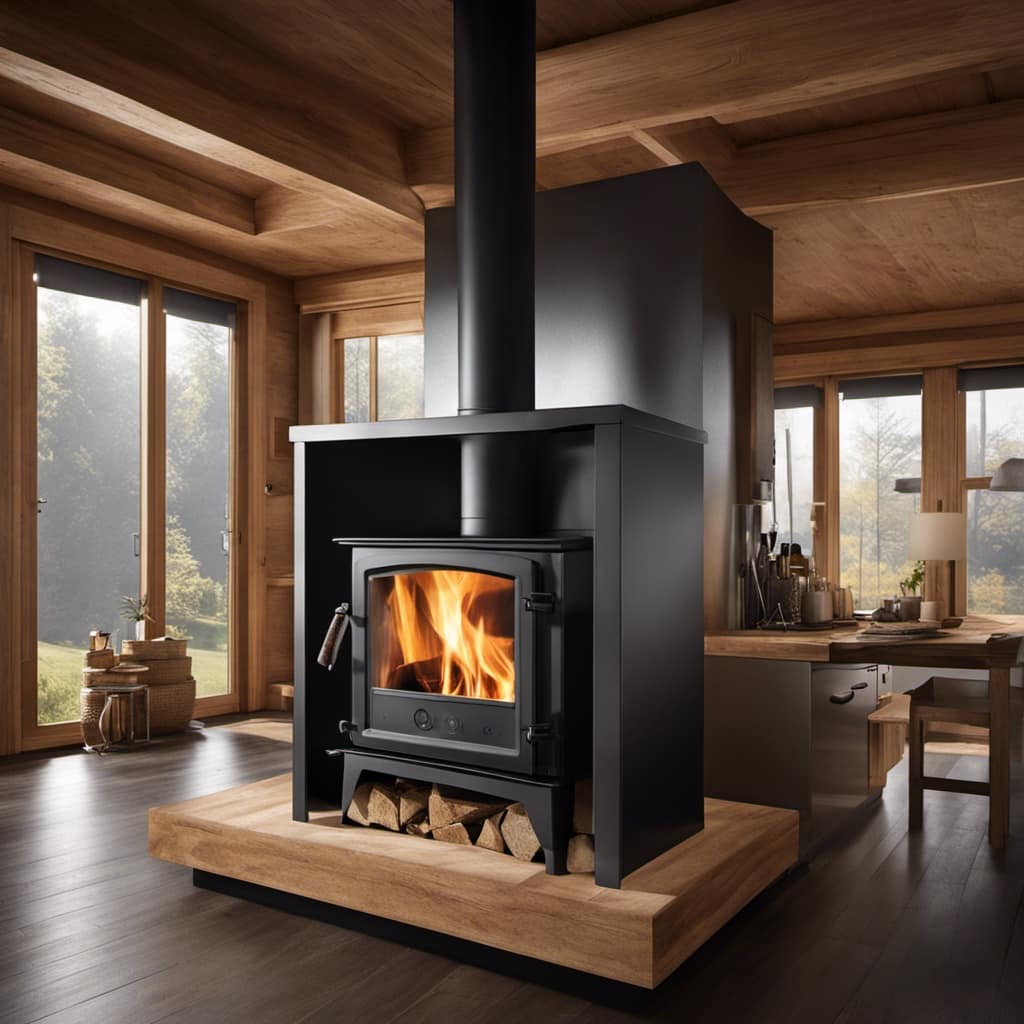
Can a Catalytic Wood Stove Provide Sufficient Heat as a Wood Stove Insert?
Yes, a catalytic wood stove can provide sufficient heat as a wood stove insert. The catalytic converter reduces emissions and increases efficiency, allowing for more heat to be produced from the wood. This makes it a great option for those looking to maximize wood stove insert heat in their home.
Frequently Asked Questions
How Long Does a Catalytic Wood Stove Typically Last Before It Needs to Be Replaced?
Typically, a catalytic wood stove can last anywhere from 10 to 20 years before it needs to be replaced. However, the lifespan of a wood stove can be influenced by various factors.
These include the quality of the stove, how well it’s maintained, the type of wood being burned, and the frequency of use. Regular cleaning and proper usage can help extend the lifespan of a catalytic wood stove.
Can a Catalytic Wood Stove Be Used as the Primary Source of Heat in a Home?
Using a catalytic wood stove as the primary heat source in a home has its pros and cons.
On the plus side, it can provide cozy warmth and a rustic atmosphere.
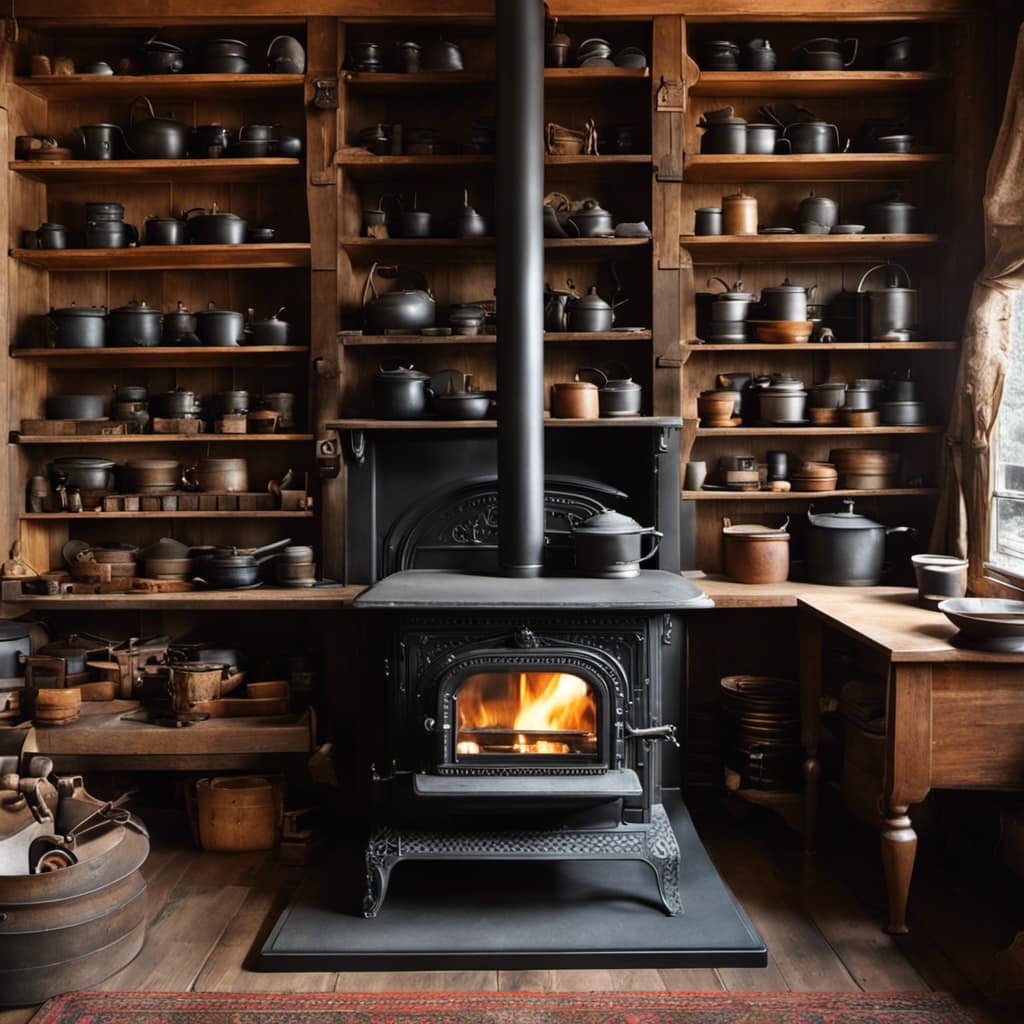
However, there are some drawbacks to consider. The environmental impact of using a catalytic wood stove as the main heating option shouldn’t be ignored. It can release pollutants into the air and contribute to air quality issues.
It’s important to weigh these factors before making a decision.
Are There Any Special Maintenance Requirements for a Catalytic Wood Stove?
Special maintenance and cleaning requirements are necessary for a catalytic wood stove. Regular cleaning of the catalytic combustor is important to maintain its efficiency. This involves removing and inspecting the combustor for any build-up or damage.
Additionally, the stove’s chimney and flue must be cleaned regularly to prevent creosote build-up, which can be a fire hazard.

It’s also crucial to check and replace gaskets, seals, and other components as needed to ensure the stove operates safely and efficiently.
Can a Catalytic Wood Stove Be Used in Areas With Strict Air Quality Regulations?
In areas with strict air quality regulations, the effectiveness of catalytic wood stoves in reducing emissions is a crucial factor to consider. These stoves are designed to burn wood more efficiently, which results in lower emissions.
However, there are both advantages and disadvantages to using catalytic wood stoves in such areas. On one hand, they can help meet air quality standards. This is because their efficient burning process reduces the amount of harmful pollutants released into the air. This can be especially important in areas where air quality is a major concern.
On the other hand, their maintenance and operation may require additional effort to ensure compliance with regulations. Catalytic wood stoves require regular cleaning and maintenance to keep them functioning at their best. They also require the use of specific types of wood and proper loading techniques to ensure optimal combustion. This can be more time-consuming and expensive compared to using traditional wood stoves.

How Does the Price of a Catalytic Wood Stove Compare to a Traditional Non-Catalytic Wood Stove?
Catalytic vs non-catalytic wood stoves: Which is more cost effective?
When comparing prices, a catalytic wood stove may initially seem more expensive than a traditional non-catalytic one. However, the long-term benefits of using a catalytic wood stove for heating outweigh the initial cost.
Catalytic wood stoves are more efficient, burning wood more completely and producing more heat for less fuel. This can lead to significant savings on fuel costs over time, making them a more cost-effective choice in the long run.
Conclusion
In conclusion, a catalytic wood stove is a highly efficient and environmentally-friendly heating option for your home. By utilizing the catalytic combustion process, these stoves maximize heat output and minimize emissions. They offer several advantages over non-catalytic wood stoves, such as longer burn times and reduced fuel consumption.
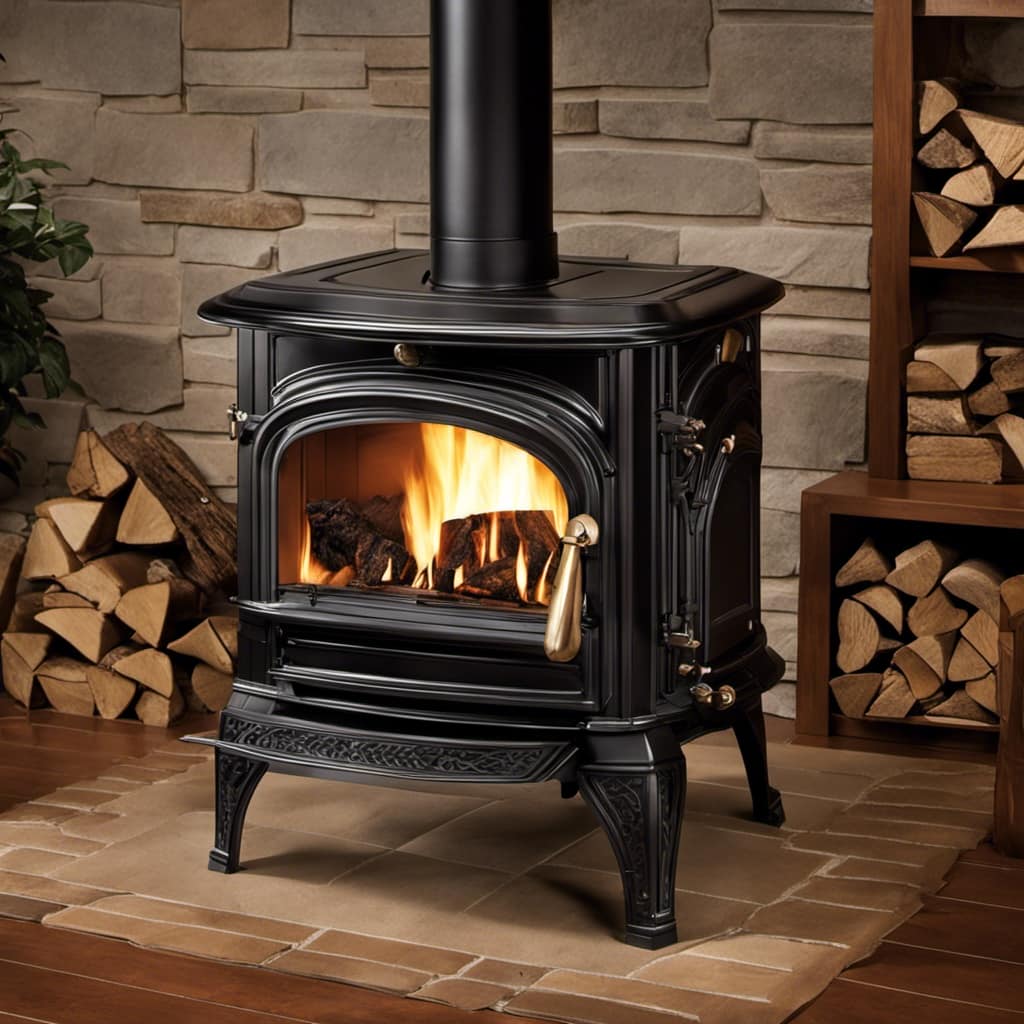
However, it’s important to properly operate and maintain your catalytic wood stove to ensure optimal performance. Consider the factors discussed when choosing the right stove for your needs. Don’t let common misconceptions deter you from experiencing the benefits of a catalytic wood stove.
Growing up surrounded by the vast beauty of nature, Sierra was always drawn to the call of the wild. While others sought the comfort of the familiar, she ventured out, embracing the unpredictable and finding stories in the heartbeat of nature.
At the epicenter of every remarkable venture lies a dynamic team—a fusion of diverse talents, visions, and passions. The essence of Best Small Wood Stoves is crafted and refined by such a trio: Sierra, Logan, and Terra. Their collective expertise has transformed the platform into a leading authority on small wood stoves, radiating warmth and knowledge in equal measure.


